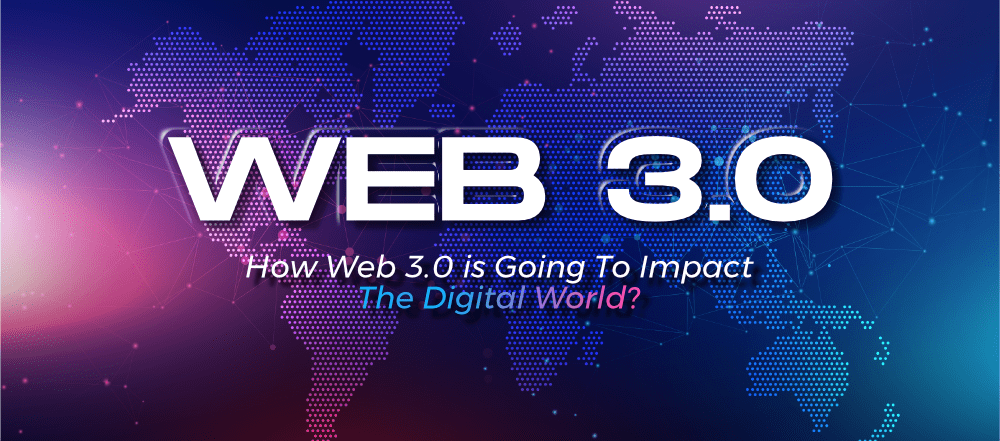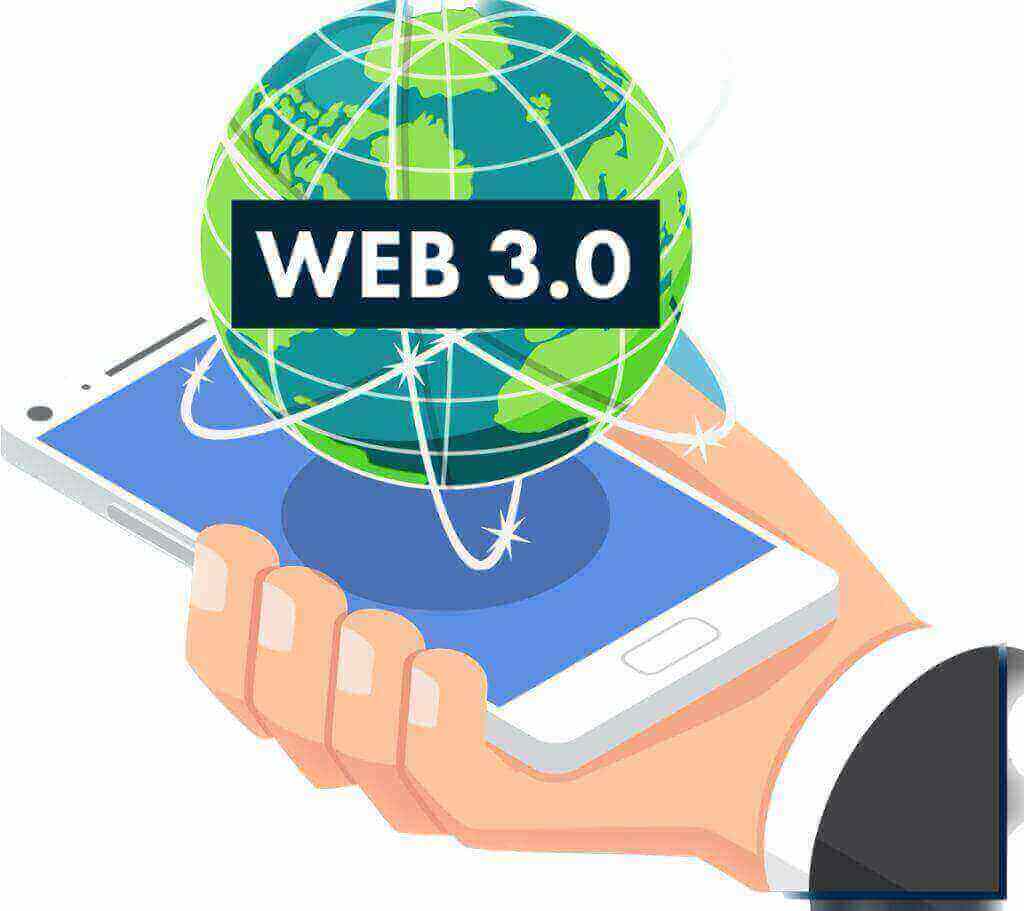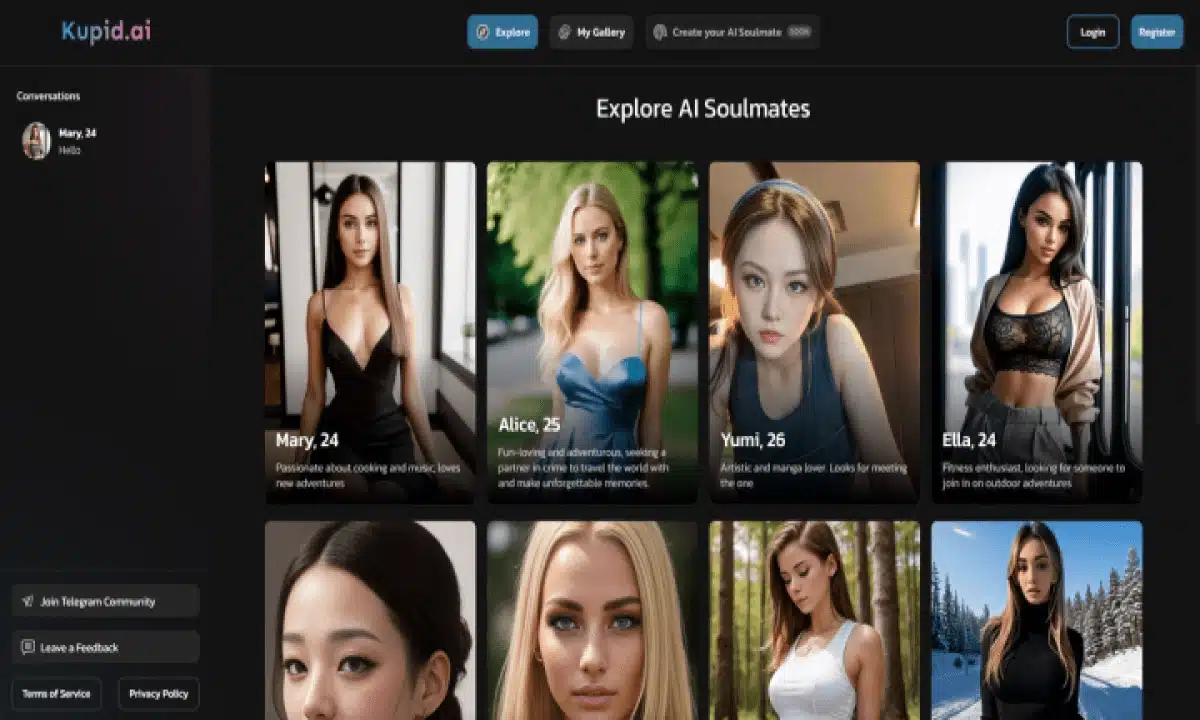Web 3.0 is a concept that refers to the next generation of the Internet which is expected to be more intelligent, interactive, and user-centric. It is expected to be built on the principles of the Semantic Web, which is a web of data. This web data can be understood by machines. Web 3.0 will be powered by artificial intelligence, machine learning, and natural language processing. It will enable users to interact with the web in a more intuitive and personalized way.
It will be a collection of APIs that allow developers to interact with the artificial tools. It provides a platform to build decentralized applications (dApps) and smart contracts. Web3 also provides a range of tools and services to help developers build and deploy dApps and smart contracts.
Currently we are discussing web 3.0 but many of us don’t even know about web 2.0 and 1.0. So, let’s start and discuss web 2.0 and web 1.0 first.
What Is Web 2.0?
Web 2.0 is a term used to describe the second generation of the World Wide Web. It is characterized by increased user interface, social networking, user-generated content, and the use of web-based applications. Web 2.0 sites are typically more interactive than traditional websites, allowing users to share information, collaborate, and create content.
These sites include social networking sites, such as Facebook, Twitter, and YouTube. Blogging platforms, such as WordPress and Tumblr, are also examples of Web 2.0 sites.
What Is Web 1.0?
Web 1.0 is the first generation of the World Wide Web, which was characterized by static webpages and limited interface. It was mainly used for information sharing and was dominated by large companies such as Yahoo and AOL. Web 1.0 was the precursor to Web 2.0, which is characterized by more interactive websites, user-generated content, and social media.
The Difference Between Web 1.0 vs Web 2.0 vs Web 3.0
- Web 1.0: It is the first generation of the World Wide Web. It is characterized by static webpages, limited interface, and basic user-generated content.
- Web 2.0: It is the second generation of the World Wide Web. It is characterized by dynamic webpages, increased interface, and more sophisticated user-generated content.
- Web 3.0: It is the third generation of the World Wide Web. It is characterized by the use of artificial intelligence and machine learning to create more personalized experiences for users. It also features increased automation, improved search capabilities, and more advanced data analysis.
Key Features of Web 3.0

1. Semantic Web
The Semantic Web is a web of data that can be processed by machines. It uses a common language to represent data and relationships between different data sources. It enables machines to understand the meaning of web content to make data more meaningful and easier to access. This will enable machines to better understand the data and provide more accurate results.
2. Artificial Intelligence
Artificial Intelligence (AI) is the ability of a computer program or a machine to think and learn. AI can be used to create intelligent applications that can understand natural language, recognize patterns, and make decisions. They can understand user intent, provide more personalized experiences and better search results.
3. Internet of Things
The Internet of Things (IoT) is a network of physical objects. These objects are connected to the Internet. They can exchange data with each other or communicate. These objects can be anything from sensors, to appliances, to vehicles.
4. Cloud Computing
Cloud computing is a model for delivering computing services over the internet. It enables users to access applications and data from anywhere.
5. Decentralization
Web 3.0 will be based on a decentralized network. This means data and services will no longer rely on a single server. Instead, they will be distributed across multiple nodes. This will make the web more secure, resilient, and efficient.
6. Increased User Interface
It will feature increased interface, allowing users to interact with websites in a more natural way. This could include voice commands, facial recognition, and other forms of biometric authentication.
How Does Web 3.0 Work?
Web 3.0 is the next step in the evolution of the internet. This term describes a set of emerging technologies. That will transform the way, we use the internet. These technologies include blockchain, distributed ledgers, artificial intelligence, and the Internet of Things (IoT).
- Blockchain is a distributed ledger technology. It enables users to securely store and transfer data without relying on a centralized authority. It is the technology that powers cryptocurrencies like Bitcoin and Ethereum.
- Distributed ledgers are databases that are stored on multiple computers, allowing for secure and efficient data sharing.
- Artificial intelligence (AI) is a type of computer programming that allows machines to learn and act like humans. AI can be used to automate tasks, analyze data, and make decisions.
- The Internet of Things (IoT) is a network. It is comprised of physical devices that are connected to the internet. These devices are capable of communicating with one another. These devices can be used to monitor and control the environment, automate processes, and collect data.
This is an evolution of the existing web. It is based on the client-server model. In this model, the server is responsible for hosting and delivering content to the user.
Web 3.0 will be based on a decentralized model, where the user is in control of their data and content. Distributed ledger technology (DLT), such as blockchain, will help us achieve our goal. DLT allows users to store and share data securely and without relying on a centralized authority.
It is the name of the next generation of the internet. It is predicted to be more secure, decentralized, and user-centric than the current version. It is expected to be powered by blockchain technology and decentralized applications (dApps).
Web 3.0 is still in its early stages, but it has the potential to transform the way we use the internet. Web 3.0 seeks to improve the internet. It is focused on providing a more secure, reliable, efficient, and user-friendly experience. This would be an upgrade from the current version.
It will be powered by distributed ledger technology, which allows for secure and transparent data storage and transfer. Decentralized applications (dApps) will be used. These dApps are built on top of the blockchain. They are open source, so anyone can access and use them.
How Will Web 3.0 Change Our Lives?
Web 3.0 is expected to transform the way we interact with the internet. It will be more intuitive, personalized, and secure than ever before. It will enable us to access more data, more quickly, and more securely than ever before.
This will enable us to access the internet in a more intuitive manner. We can do this by using voice commands, facial recognition, and gesture control. Web 3.0 will also bring us more personalized experiences, with content tailored to our interests and preferences.
Web 3.0 will bring us more secure transactions. Blockchain technology will provide a secure and transparent method to store and transfer data. It is expected to drastically change how we use the internet. This will have a major impact on our lives. Overall, it will be a revolution. Now as we know how web 3.0 will change your life, let’s drive deep into its advantages and disadvantages.
Advantages and Disadvantages of Web 3.0
Advantages
- Increased interface – Web 3.0 will enable users to interact with websites in a much more interactive way. This will allow for more dynamic and engaging experiences.
- Improved Security – Web 3.0 will provide improved security and privacy features, allowing users to feel more secure when using the internet.
- Increased Personalization – Web 3.0 will allow websites to personalize content to the user’s preferences, making the experience more tailored and enjoyable.
- Improved Search – Web 3.0 will enhance search abilities. This will make it simpler for users to find what they need.
- Increased Connectivity – Web 3.0 will allow for more connected experiences, allowing users to access information from multiple sources and devices.
Disadvantages
- Increased Complexity – Web 3.0 will be more complex than previous versions of the web, making it more difficult to understand for developers.
- Increased Cost – Web 3.0 will require more resources and infrastructure, which will likely increase the cost of development and maintenance.
- Increased Risk – Web 3.0 will introduce new security risks, as well as potential privacy issues.
- Increased Dependence – Web 3.0 will require greater reliance on technology. This may result in an inadequate grasp of the technology’s fundamentals.
- Increased Fragmentation – Web 3.0 will likely lead to more fragmentation of the web, as different technologies and standards are used.
Is Web 3.0 the future of the internet?
Web 3.0 is an evolving concept. It refers to the next generation of the internet. This version of the internet is anticipated to be more decentralized, secure, and interconnected. This web experience is characterized by three technologies: blockchain, artificial intelligence, and machine learning. This enables a more open, transparent, and collaborative environment.
It is hard to know for sure what the future of the internet holds. However, many experts think Web 3.0 could completely change how we use the internet.
Decentralization and democracy could be brought to the web. Users would have greater control over their data and digital identities. Trust and transparency would be embedded into the internet’s foundation.
Web 3.0 could enable applications and services not yet possible. Examples include decentralized marketplaces, peer-to-peer social networks, and autonomous organizations.
It technology adoption is in its early stages. There are several technical and regulatory challenges that must be addressed before it becomes mainstream. It is worth noting this.
Web 3.0 is an exciting development that could change the internet. It is uncertain if it will become the dominant paradigm for the web in the future. Overall, it is an exciting development that could have a significant impact.
How do I create a Web 3.0 website?
Creating a Web 3.0 website involves leveraging new technologies and frameworks to build decentralized, trustless, and secure applications. Here are the general steps you can take to create a Web 3.0 website:
- Choose a blockchain platform
- Web 3.0 is based on blockchain technology. To create your website, you must select a blockchain platform. Some popular options include Ethereum, Polkadot, and Binance Smart Chain.
- Decide on your website’s functionality
- Web 3.0 websites can serve a wide range of purposes, from decentralized marketplaces to social networks to gaming platforms. Decide on the core functionality of your website. Determine the smart contracts or other blockchain protocols needed to support it.
- Learn smart contract programming
- Smart contracts are self-executing programs that run on blockchain networks, and they are a critical component of Web 3.0 websites. You will need to learn programming languages for smart contracts. Examples are Solidity (for Ethereum) and ink! (for Polkadot). These languages are essential for building your website’s smart contracts.
- Develop your front-end
- Once your smart contracts are ready, you should start developing the front-end of your website. Popular web development frameworks such as React, Vue.js, and Angular can be used.
- Connect your front-end to the blockchain
- To make your website truly decentralized, you will need to connect it to the blockchain. This involves using tools like web3.js or ethers.js to interact with the blockchain and execute smart contract functions.
- Test and deploy
- Before launching your Web 3.0 website, it’s important to thoroughly test it for security and functionality. Once you are satisfied with its performance, you can deploy it to the blockchain and make it available to users.
Creating a Web 3.0 website requires a deep understanding of blockchain technology, smart contract programming, and web development. It can be a complex and challenging process, but there are many resources available online to help you get started.
Why is Web 3.0 important?

Web 3.0 is important for several reasons:
- Decentralization – Web 3.0 aims to decentralize the internet, which means that no single entity will have complete control over the web. This is important because centralized systems are vulnerable to censorship, exploit, and corruption, whereas decentralized systems are more resilient and transparent.
- Trust and security – Web 3.0 technologies, such as blockchain, can increase trust and security online. They do this by providing records which cannot be altered and eliminating the need for intermediaries. This can help to prevent fraud, cyber attacks, and other security threats.
- Ownership and control – Web 3.0 gives users more ownership and control over their data and digital identities. Users can now choose how their data is used and who has access to it. This is a big change from the current system, where tech companies hold complete power over user data.
- Innovation – Web 3.0 enables new types of applications and services that are currently not possible on the web. For example, decentralized marketplaces, peer-to-peer social networks, and autonomous organizations can all be built on Web 3.0 technologies.
- Global accessibility – Web 3.0 can make the internet more accessible to people around the world who are currently underserved by centralized systems. For example, blockchain-based payment systems can provide financial services to people who don’t have access to traditional banking systems.
It has the potential to create a more open, transparent, and democratic internet. This would better suit the needs of users. Overall, this could significantly improve the online experience. It is an important development that could have far-reaching implications for the future of the web.
Conclusion
In conclusion, Web 3.0 represents the next generation of the internet, which is expected to be more decentralized, secure, and interconnected. This web experience is characterized by the use of three technologies: blockchain, artificial intelligence, and machine learning. It is designed to be more open, transparent, and collaborative.
It is important because it can improve trust, security, ownership, and control on the internet. New types of applications and services can be enabled with this technology. These services are not currently possible on the web. This technology can also make the internet more accessible to people around the world.
Creating a Web 3.0 website requires a deep understanding of blockchain technology, smart contract programming, and web development. It is still in its early stages. However, it has the potential to transform the way we use the internet. This could lead to major changes in the digital landscape in the future.




